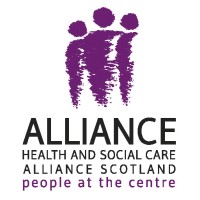There are many digital tools that can help with your health and wellbeing. They range from very simple tools (such as step counters) to very advanced machineries (such as those used in robotic surgery). Technology has helped us improve how we live, work and play, as well as how we look after ourselves and each other.
This guide focuses only on technologies that are available to us on an everyday basis. These could, in the right circumstances, benefit our health, care and wellbeing.
What technologies are you talking about?
Apps (mobile applications) are programmes that you use on your smartphone. They can fulfil a huge range of tasks.
Wearables are devices that you can wear on your wrist, around your neck or even on your shoes and ankles. They usually track steps, heart rate and other activities you might take part in. More advanced examples include patches that can analyse chemicals within your body.
Online programmes and websites are resources that you would access through a browser. Examples of browsers include Google Chrome, Safari, Edge and Firefox. These work on any devices that can access the web. This includes computers, laptops, smartphones, tablets and even some e-Readers (such as Kindles). You do not need to install anything on your device to use them.
Sensors and home aids are devices that you can install in your home. These can help with everyday living or in emergency situations. They include bed pressure sensors that can detect when you get in or out of bed. They also include smart energy meters, alarms, movement sensors, smoke, gas and flood detectors or fall detectors.
Environmental Control Systems are devices that can be installed in the home. They assist individuals to control everyday equipment and devices. This includes TVs, phones, doors and many more.
Tele-monitoring tools are devices that help you to track certain health aspects. They can also send this information to your GP or another healthcare professional. Tele-monitoring tools can also help you avoid going into a hospital or GP practice for routine checks. Instead, they let you take your own readings. You can then send them to your health professional through a text or online. This is common for blood pressure monitoring, for example.
Some more tools are defined in the glossary section.
How much control do I have over these technologies?
The level of control you have in your interactions with these technologies varies. Some are tools for reporting at a distance (tele-monitoring). Some send data automatically (sensors). However, some will allow you more choice and involvement. They could even give you personalised feedback.
The level of control you have over the technology will depend on two things:
- How advanced the technology is
- Who is providing the technology
 Many digital tools are available for free today, in particular apps. You can buy more complex solutions or devices from private companies. In some cases, you can get paid-for tools for free or subsidised through local councils or the NHS. Make sure to discuss your options with someone you trust before you commit to anything. It is important that you understand how the technology works. Most importantly, you want to know if there are any risks involved in using a new tool or device. This guide will highlight some of the key risks. This can help you identify them and make an informed decision on whether to use a digital tool or not.
Many digital tools are available for free today, in particular apps. You can buy more complex solutions or devices from private companies. In some cases, you can get paid-for tools for free or subsidised through local councils or the NHS. Make sure to discuss your options with someone you trust before you commit to anything. It is important that you understand how the technology works. Most importantly, you want to know if there are any risks involved in using a new tool or device. This guide will highlight some of the key risks. This can help you identify them and make an informed decision on whether to use a digital tool or not.
It is also worth thinking how much time and effort you are willing to put into your use of digital tools. This is likely to impact the type of tool that is most suitable to you. For example, there are many apps today that can help people track what they eat. These can be useful for those living with diabetes or looking to manage their weight. But they can also be very time intensive, as each meal or snack needs to be recorded in the app.
Other tools request less of you. For example, step tracking apps and devices often record data in the background. All you need to do is remember to charge your devices and take them with you when you go for a walk.






